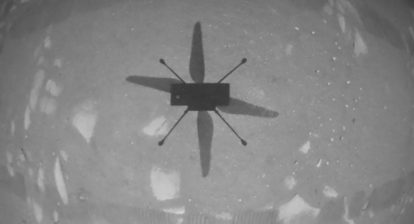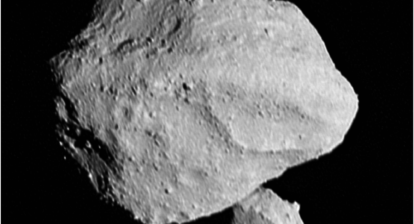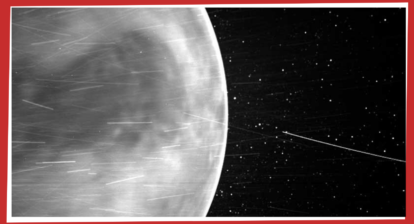Astronomers have discovered a swarm of boulders ejected from asteroid Dimorphos after it was impacted by the DART spacecraft. DART is NASA’s first mission to demonstrate asteroid deflection by a kinetic impactor, one part of NASA’s larger planetary defense strategy.
The 37 boulders, which range in size from 1 meter to 6.7 meters across, were spotted by the Hubble Space Telescope. They are drifting away from the asteroid at around one kilometer per hour. The total mass in these detected boulders is about 0.1% the mass of Dimorphos.

Annotated version: This NASA/ESA Hubble Space Telescope image of the asteroid Dimorphos was taken on 19 December 2022, nearly four months after the asteroid was impacted by NASA’s DART (Double Asteroid Redirection Test) mission. Hubble’s sensitivity reveals a few dozen boulders knocked off the asteroid by the force of the collision. These are among the faintest objects Hubble has ever photographed inside the Solar System. The ejected boulders range in size from 1 metre to 6.7 metres across, based on Hubble photometry. They are drifting away from the asteroid at around a kilometre per hour. The discovery yields invaluable insights into the behaviour of a small asteroid when it is hit by a projectile for the purpose of altering its trajectory. Credit: NASA, ESA, D. Jewitt (UCLA)
The boulders are most likely not shattered pieces of the diminutive asteroid caused by the impact. They were already scattered across the asteroid’s surface, as evident in the last close-up picture taken by the DART spacecraft just two seconds before collision.
The science team that observed these boulders with Hubble estimates that the impact shook off two percent of the boulders on the asteroid’s surface. While the boulder observations by Hubble also give an estimate for the size of the DART impact crater, Hera will eventually determine the actual crater size.
Long ago, Dimorphos may have formed from material shed into space by the larger asteroid Didymos. The parent body may have spun up too quickly or could have lost material after a glancing collision with another object, among other scenarios. The ejected material formed a ring that gravitationally coalesced to form Dimorphos. This would make it a flying rubble pile of rocky debris loosely held together by the relatively weak pull of its gravity. Therefore, the interior is probably not solid, but has a structure more like a bunch of grapes.
It’s not clear how the boulders were lifted off the asteroid’s surface. They could be part of an ejecta plume that was photographed by Hubble and other observatories. Or a seismic wave from the impact may have rattled through the asteroid — like hitting a bell with a hammer — shaking loose the surface rubble.
The DART and LICIACube (Light Italian CubeSat for Imaging of Asteroids) teams have also been studying boulders detected in images taken by LICIACube’s LUKE (LICIACube Unit Key Explorer) camera in the minutes immediately following DART’s kinetic impact.
Double Asteroid Redirection Test (DART) was a NASA space mission, the first ever aimed at testing a method of planetary defense against near-Earth objects. It was designed to assess how much a spacecraft impact deflects an asteroid through its transfer of momentum when hitting the asteroid head-on.

An artist’s depiction of NASA’s DART spacecraft flying into the asteroid Dimorphos. (Image credit: NASA/Johns Hopkins Applied Physics Lab)
This discovery opens up a new dimension for studying the aftermath of the DART experiment using the European Space Agency’s upcoming Hera mission, which is due to launch in 2024. The spacecraft will perform a detailed post-impact survey of the target asteroid Dimorphos. Hera will turn the grand-scale experiment into a well-understood and repeatable planetary defense technique that might one day be used for real.
![The bright white object at lower left is the asteroid Dimorphos. It has a blue dust tail extending diagonally to the upper right. A cluster of blue dots surrounds the asteroid. These are boulders that were knocked off the asteroid when, on 26 September 2022, NASA deliberately slammed the half-tonne DART impactor spacecraft into the asteroid as a test of what it would take to deflect some future asteroid from hitting Earth. Hubble photographed the slow-moving boulders in December 2022.] Credit: NASA, ESA, D. Jewitt (UCLA)](https://www.360onhistory.com/wp-content/uploads/2023/07/heic2307a-864x467.jpg)






